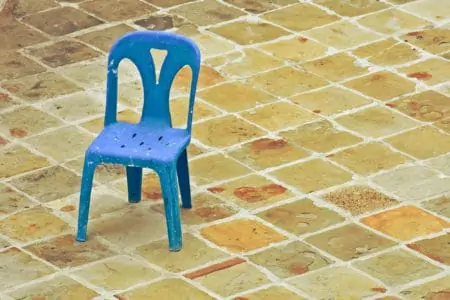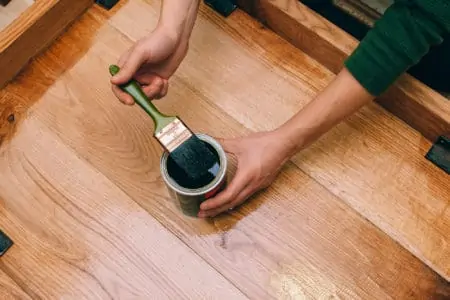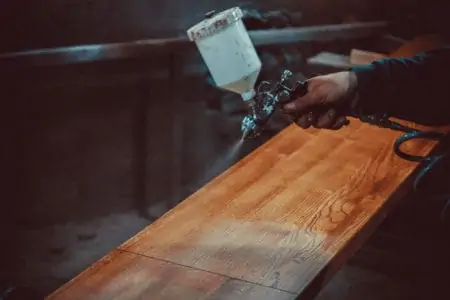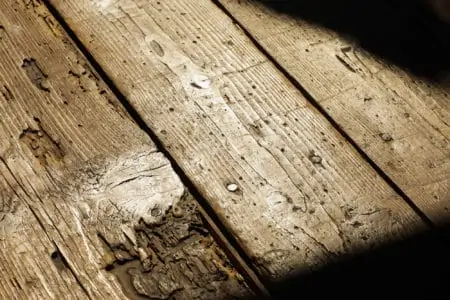When you get paint on plastic surfaces, it can be a pain to remove. But don’t fret, it’s not impossible! Knowing how to remove paint from plastic is easier than you might think; however, the sooner you tackle it, the better.
Plastic paint remover like alcohol is one method, but there are many more. We show you how to strip spray paint from plastic in an easy-to-follow guide and offer hints and tips along the way.
Key Takeaways
- Act quickly to remove wet paint with warm soapy water and a sponge or cloth.
- For dried paint, use rubbing alcohol, paint thinner, or white vinegar to loosen the paint before scraping or wiping it off.
- To avoid scratching the plastic surface, try using baking soda, vinegar, or hydrogen peroxide on oil-based and latex paints.
- Always test a small area first to ensure that the paint removal method won’t damage or discolor the plastic surface.
How To Remove Fresh Paint from Plastic
Cleaning paint while it is still wet is a whole lot easier than when it dries, so the secret is to act before it sets.
1. Warm Soapy Water
Grab a bucket and fill it with warm water, adding a few squirts of dish soap. If you don’t have dish soap, other liquid soaps will do.
2. Dip Smaller Items
If the plastic item is small enough to submerge in the bucket of warm soapy water, dip the affected area under the water and either rub at the paint with your fingers or use a sponge.
When you are sure the paint is gone, lift the item out and dry it with a towel. This method also works with wet spray paint, but you need to work quickly because it dries faster than other paints.
3. Use a Sponge
For larger plastic surfaces, dip a sponge in the warm soapy water and wipe down the item’s surface, scrubbing the paint off as you work.
For electrical items, squeeze the excess water from the sponge.
You may need a couple of attempts to clean the entire paint stain away; make sure you squeeze the sponge each time you dip it in the bucket. This is the ideal method to use because it cleans without scratching, preserving the surface of your plastic item.
4. Rinse Under a Tap
When you are sure the paint has gone, take the plastic item and rinse it under a tap to remove the excess soap. Latex paints respond to this removal method because they are water-based; however, you may need a different solution for oil-based paints.
Safety Warning
5. Dry The Plastic
You could opt to dry the plastic using a cloth or towel, or you can leave it to dry naturally in the fresh air. If the item is electronic, wait until it is entirely dry before using it.
Keep In Mind
How To Remove Dried Paint from Plastic
When you have dried paint on your plastic surfaces, removing it without a trace is still possible. Even dried-on gloss paint and enamel paint come off with the proper techniques.
1. Soak In Rubbing Alcohol
If the paint stain is particularly thick, rubbing alcohol is an excellent product to use. It loosens the paint and makes it easier to remove.
Pour a small amount of the rubbing alcohol over the paint and leave it to stand. If you are wiping paint from electrical items, soak a paper towel in the alcohol and place it over the stain. Use 91 to 99 percent rubbing alcohol for the best results.
2. It’s Time To Scrape
There are a couple of ways you can scrape the paint from plastic. You could use your fingernails, a scraping tool, or a paint scraper. Paint scrapers are the best option for flat surfaces, while your fingernail is better for odd-shaped items.
You could also use a flat-head screwdriver as an additional scraper. Be careful because when you start scraping, it could permanently mark the plastic surface.
Hold the tool at a 45-degree angle, with the edge of the scraper against the outer rim of the paint splash. The direction that you work depends on the device. If you are scraping with your fingernail, pull against the paint edge, but with all other tools, push against the paint.
3. Rinse and Scrape Again
When the majority of the paint has lifted off, rinse the surface with water. You can use vegetable oil instead to wash away the excess paint. The oil keeps the paint supple, making it easier to lift off. Continue scraping until all the stain has disappeared.
4. Cleanup Time
Wet a sponge and wipe it over the plastic, then dry the surface of the plastic with a cloth. You can also leave it to dry naturally..
How To Remove Paint from Plastic Without Scratching
If your plastic surface is precious to you and you don’t want to risk damaging it by scraping, there are methods that achieve the same results minus the elbow grease.
These methods work best on oil-based paints and gloss paints with high resin and binder contents. They typically dry to a hard shell and are difficult to remove.
1. Paint Thinner
Remember
The first thing is to test a small area of your plastic with the solvent to ensure that you don’t get an adverse reaction. Some plastics react by changing color and consistency, so if your test area discolors or you can press your nail into the plastic leaving a dent, don’t use the thinner.
Apply a few drops of the paint thinner to the stain using a cotton wool ball and leave it to get to work for 20 minutes. Using the same wool ball, gently rub the paint stain until it starts to lift off. Keep doing this until it has completely gone.
If the wool gets too discolored, discard it and use another one. Keep the ball soaked in the thinner because it dries quickly, and you risk leaving cotton fluff on the surface of your plastic.
Once you get the paint off, rinse the plastic with water and soap and pat it dry with a towel or rag.
2. Baking Soda
Mix baking soda with a small amount of water, forming a toothpaste consistency. Smear it over the paint stain and leave it to work for 30 minutes. Now grab a clean rag and wipe the paint away.
You can rinse the cloth in warm water to get the residue off the plastic, and then when all the paint is gone, rinse the plastic with water and pat it dry with a towel.
3. White Vinegar
White vinegar reacts with paint on a multitude of surfaces, so removing paint from plastic should be a breeze. It is also easy to get hold of and cheap to buy.
For the best results, pour neat vinegar over the paint stain. Leave it to sit for 20 minutes, and then grab a clean cloth and wipe the stain away. Repeat the procedure until all the paint is removed.
If you want to add extra power to the vinegar solution, use the baking soda method and apply the vinegar to the paste to give you extra punch if you need it.
4. Ammonia
Ammonia is pungent, so always wear gloves and a face mask when using it to remove paint stains. Also, open windows and doors for better ventilation.
Pour it over the stain and let it sit for 10 minutes while the ammonia gets to work.
You can also mix the ammonia with borax and soda on a 1:1:1 basis. Dissolve the ammonia, borax, and soda in a bucket with two liters of water. Apply it over the paint stain using a rag or cloth, and wait 30 minutes while the solution gets to work.
Wipe the mixture away with the cloth, and hopefully, the paint has disappeared. If there is still residue, repeat the process.
5. Hydrogen Peroxide
Hydrogen peroxide is the perfect product to use on latex paint because it is water-soluble. Apply a small amount of the peroxide to the paint stain using a spoon. Leave it to sit for a few minutes and then dab at the stain using a cloth or paper towel.
For thicker paint splashes, leave the hydrogen peroxide to sit for about an hour before attempting to wipe it clean.
FAQs
Keeping Your Plastic Fantastic
Removing paint from plastic surfaces is always easier when the paint is wet. Acting straight away is always the best policy, especially if you want to minimize scratches and scuffs. Using mild detergents and soapy water is much better for your surfaces than harsh abrasives like thinner or solvent-based products.
Dried paint is always more of a challenge, but it can be done with care and attention. The crucial thing is to check first that the chemicals you are using don’t do more damage than good.









